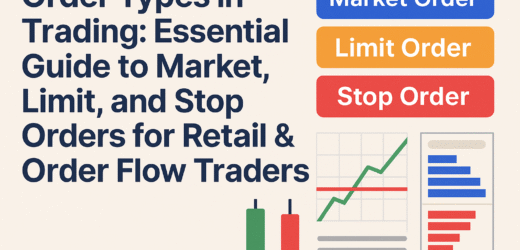Introduction to Trading Analysis
In the ever-evolving world of financial markets, two powerful schools of thought dominate the discussion: technical and fundamental analysis. While many traders, especially beginners, often take sides, a growing consensus among professionals suggests that success lies not in choosing one over the other but in combining both.
Understanding technical vs fundamental analysis in trading is crucial for anyone serious about navigating the markets with insight and consistency. These tools aren’t just theoretical frameworks—they are lenses through which the pros view, interpret, and act upon market signals.
What is Technical Analysis?
Core Principles of Technical Analysis
Technical analysis is grounded in the idea that past market data primarily price and volume can help predict future market movements. It assumes that all known fundamentals are already reflected in prices, and thus, historical data offers clues about the market’s next steps.
The backbone of technical analysis lies in:
- Price Action: Every price movement contains meaning. Traders look for trends, breakouts, or reversals based on the behavior of price.
- Market Psychology: Emotions such as fear and greed are visible in charts. Patterns like head-and-shoulders or double tops reflect these sentiments.
- Self-fulfilling Prophecy: Since many traders rely on similar chart patterns, their actions can reinforce the very trends they predict.
Tools and Charts Used
Technical analysts rely heavily on visual representations. Some common tools include:
| Tool | Purpose |
|---|---|
| Candlestick Charts | Show open, high, low, and close prices |
| Moving Averages | Smooth out price trends |
| Bollinger Bands | Measure volatility |
| RSI & MACD | Gauge momentum and potential reversals |
| Fibonacci Retracement | Predict potential support/resistance zones |
These tools help traders determine entry, exit, and stop-loss points with greater precision.
Pros and Limitations
Pros of Technical Analysis:
- Provides a clear framework for decision-making
- Works across different asset classes and timeframes
- Excellent for short-term trading and scalping
Limitations:
- Doesn’t account for sudden news or fundamental shifts
- Can produce false signals in choppy markets
- Requires disciplined execution and emotional control
What is Fundamental Analysis?
Economic Indicators and News Impact
Fundamental analysis assesses the true value of an asset by examining economic, financial, and geopolitical data. It’s especially useful for long-term trading and investment decisions.
Key drivers include:
- Interest Rates: Central bank policies affect borrowing and lending behavior.
- Inflation Rates: Determine purchasing power and influence currency valuation.
- Employment Data: Reflects economic strength and consumer spending trends.
- Geopolitical Events: Elections, wars, and treaties can drastically affect asset prices.
Understanding Financial Statements
For equity traders, financial statements are goldmines of insight. They include:
- Income Statement: Revenue, expenses, and profits over time.
- Balance Sheet: Overview of assets, liabilities, and shareholder equity.
- Cash Flow Statement: Tracks money coming in and out of the business.
Analyzing these documents helps assess a company’s health, sustainability, and growth potential.
Strengths and Shortcomings
Strengths of Fundamental Analysis:
- Provides a big-picture understanding
- Useful for identifying undervalued or overvalued assets
- Guides long-term strategies with solid economic backing
Shortcomings:
- Not ideal for timing market entries
- Requires time and expertise to interpret data correctly
- Slow to adapt to rapidly changing market dynamics
The Longstanding Debate: Which is Better?
Views from Novice Traders
The debate often splits traders into two camps. Beginners typically adopt one approach and defend it passionately, sometimes dismissing the other without fully understanding its utility. This binary thinking leads to missed opportunities.
Some common misconceptions include:
- “Charts tell you everything you need to know.”
- “Fundamentals are only for investors, not traders.”
- “News is unpredictable; I’ll just follow trends.”
Common Misunderstandings
Each method has its strengths and weaknesses, and neither guarantees success on its own. Markets are complex systems driven by both rational data and emotional reactions. Isolating one method limits a trader’s vision.
Professional success often lies in combining what is happening (fundamentals) with how the market reacts to it (technicals).
The Pro Traders’ Approach
Why They Use Both Methods
Pro traders are pragmatic. They know that combining both types of analysis provides a more comprehensive market view. Here’s why:
- Fundamentals explain the ‘why’
- Technicals explain the ‘when’
By merging the two, professionals minimize risk and increase the probability of success.
Case Studies and Real-World Insights
During the COVID-19 pandemic, central banks around the world slashed interest rates. Pro traders anticipated this fundamental shift and used technical analysis to time entries in sectors likely to benefit, such as tech and healthcare.
In crypto trading, understanding regulatory changes (fundamentals) can alert traders to upcoming volatility. But only by using technical charts can they decide exactly when to enter or exit a position.
How to Combine Technical and Fundamental Analysis Effectively
Strategic Framework for Integration
To merge technical and fundamental analysis successfully, traders can follow a layered approach:
- Begin with the Big Picture (Fundamentals)
Assess macroeconomic trends, industry conditions, and geopolitical developments. Identify key events like central bank meetings, earnings announcements, or fiscal policies that could drive the market. - Filter with Sector or Asset Selection (Fundamentals)
Focus on sectors or assets that are likely to benefit or suffer from these macro conditions. For example, rising interest rates might benefit banks but hurt tech companies. - Use Technicals for Entry/Exit Timing
After narrowing down your focus, apply technical tools like support/resistance, moving averages, and momentum indicators to find optimal trading points. - Monitor for Confirmation or Contradiction
Make sure both types of analysis point in a similar direction. If fundamentals suggest a bullish outlook but charts indicate bearish patterns, reconsider the timing or size of the trade.
When to Prioritize Each Type
Prioritize Fundamentals when:
- Trading long-term positions
- Entering before major news releases
- Evaluating earnings-driven or policy-driven assets
Prioritize Technicals when:
- Scalping or day trading
- Timing exact entries/exits
- Identifying short-term market sentiment
Benefits of a Hybrid Approach in Modern Markets
Managing Volatility and Risk
Markets today are more interconnected and reactive than ever. Unexpected events can trigger massive price swings. A hybrid strategy equips traders with:
- Better Context: Understanding why a price moves prevents emotional reactions.
- Smarter Stop-Loss Placement: Use technical levels backed by fundamental trends.
- Risk Diversification: Choose trades with multiple supporting signals from both schools.
Gaining an Edge Over the Market
Retail traders who rely solely on one method often miss out on key information. Merging both analyses provides a sharper competitive edge by:
- Identifying high-probability trades
- Adapting to different market phases (trending, consolidating, volatile)
- Staying ahead of institutional moves and market sentiment
Common Mistakes to Avoid When Using Both Analyses
Overtrading and Overanalyzing
Trying to mix every possible indicator or news item can lead to analysis paralysis. Common pitfalls include:
- Using too many indicators with conflicting signals
- Overreacting to short-term news without long-term context
- Ignoring your trading plan due to fear or overconfidence
Stick to a defined system and review your trades periodically.
Ignoring Macro Trends
Some traders get overly focused on charts and ignore broader signals. For instance, trading bullish patterns during a recession or ignoring interest rate hikes can be dangerous.
Always zoom out before zooming in. Make sure your technical positions are aligned with the larger economic direction.
Tools and Platforms That Help Merge the Two Analyses
Suggested Tools and Software
Here are some of the most powerful platforms that help integrate both approaches:
| Tool | Features |
|---|---|
| TradingView | Charting, news, earnings calendars, social analysis |
| MetaTrader 5 | Real-time trading, news integration, technical plugins |
| ThinkorSwim | Advanced charting + economic indicators and scans |
| Bloomberg Terminal | Real-time data, financial news, fundamental reports |
Learning Resources and Communities
- Investopedia – In-depth guides for both analysis types
- YouTube Channels (Rayner Teo, The Trading Channel) – Visual tutorials
- Reddit (r/StockMarket, r/Forex, r/Trading) – Discussion and idea sharing
- Coursera/Udemy – Structured online courses for beginners and advanced users
FAQs on Technical vs Fundamental Analysis in Trading
1. Can a trader succeed using only technical analysis?
Yes, many short-term traders rely solely on technical analysis and achieve consistent results. However, they must be highly disciplined, use risk management, and remain aware of major economic events that could invalidate their setups.
2. When is fundamental analysis more effective?
Fundamental analysis excels in long-term scenarios. Investors and position traders use it to evaluate the intrinsic value of an asset, especially during economic cycles, earnings seasons, or policy changes.
3. Are professional traders always using both?
Most seasoned and successful traders, especially institutional and hedge fund professionals, combine both methods. They use fundamentals to gauge the market climate and technicals to make timely, efficient trade decisions.
4. How do I start learning to merge both types?
Start with basic economic principles like interest rates, inflation, and GDP. Then pair them with simple technical tools like moving averages and support/resistance levels. Practice by analyzing past trades and understanding how news and price patterns interact.
5. What are the best economic indicators for traders?
Some essential indicators include:
- Non-Farm Payrolls (NFP) – U.S. job data
- Consumer Price Index (CPI) – Measures inflation
- Gross Domestic Product (GDP) – Economic growth
- Interest Rate Decisions – Central bank actions
- PMI (Purchasing Managers’ Index) – Business conditions
6. Do institutional investors use technical analysis?
Absolutely. Even large institutional investors and hedge funds use technical analysis. While fundamentals guide their long-term positions, they often use technical indicators to refine entry points and manage risk.
Conclusion: Mastering the Market Through Dual Insight
The ongoing debate between technical vs fundamental analysis in trading is not about choosing a side it’s about mastering the synergy. Technicals offer precision and timing, while fundamentals provide depth and direction. When used together, they create a comprehensive toolkit that equips traders to thrive in both calm and chaotic markets.
By understanding both schools of thought, adopting a hybrid strategy, and learning from professional traders, you can move beyond surface-level tactics and trade with true conviction. Whether you’re a day trader, swing trader, or long-term investor, the integration of these two methodologies could be your edge in the competitive world of trading.
Recommended Reading: Investopedia Guide to Market Analysis




